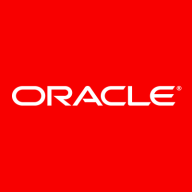

Find out in this report how the two Cloud Data Integration solutions compare in terms of features, pricing, service and support, easy of deployment, and ROI.


AWS Database Migration Service, also known as AWS DMS, is a cloud service that facilitates the migration of relational databases, NoSQL databases, data warehouses, and other types of data stores. The product can be used to migrate users' data into the AWS Cloud or between combinations of on-premises and cloud setups. The solution allows migration between a wide variety of sources and target endpoints; the only requirement is that one of the endpoints has to be an AWS service. AWS DMS cannot be used to migrate from an on-premises database to another on-premises database.
AWS Database Migration Service allows users to perform one-time migrations, as well as replications of ongoing changes to keep sources and targets in sync. Organizations can utilize the AWS Schema Conversion Tool to translate their database schema to a new platform and then use AWS DMS to migrate the data. The product offers cost efficiency as a part of the AWS Cloud, as well as speed to market, flexibility, and security.
The main use cases of AWS Database Migration Service include:
AWS Database Migration Service Components
AWS Database Migration Service consists of various components which function together to achieve users’ data migration. A migration on AWS DMS is structured in three levels: a replication instance, source and target endpoints, and a replication task. The components include the following actions:
AWS Database Migration Service Benefits
AWS Database Migration Service offers its users a wide range of benefits. Among them are the following:
Reviews from Real Users
Vishal S., an infrastructure lead at a computer software company, likes AWS Database Migration Service because it is easy to use and set up.
Vinod K., a data analyst at AIMLEAP, describes AWS DMS as an easy solution to save and extract data.
Oracle Data Integrator (ODI) is a data integration software solution that provides a unified infrastructure to streamline data and application integration projects. It uses a powerful design approach to data integration, which separates the declarative rules from the implementation details. The solution is based on a unique ELT (Extract Load Transform) architecture, eliminating the need for a standalone ETL server and proprietary engine.
Oracle Data Integrator Features
ODI has many valuable key features. Some of the most useful ones include:
Oracle Data Integrator Benefits
There are many benefits to implementing ODI. Some of the biggest advantages the solution offers include:
Reviews from Real Users
Below are some reviews and helpful feedback written by PeerSpot users currently using the Oracle Data Integrator (ODI) solution.
Brian D., Business Process and Strategy Specialist Advisor at NTTData, says, “The Knowledge Module (KM) is my favorite feature of ODI. This is where I learned how to use variables to make jobs dynamic. I took that knowledge and created a KM that would go into iTunes and pull the sales of eBooks. Making something that is reusable, like a KM, is important to not only reduce build time but also maintenance in the future.”
Ashok S., Applications Support Manager at a marketing services firm, mentions, "The most valuable features of ODI are the ease of development, you can have a template, and you can onboard transfer very quickly. There's a lot of knowledge modules available that we can use. If you want to connect, for example, a Sibyl, SQL, Oracle, or different products, we don't have to develop them from scratch. They are available, but if it's not, we can go into the marketplace and see if there's a connector there. Having the connector available reduces the amount of hard work needed. We only have to put the inputs and outputs. In some of the products, we use there is already integration available for ODI, which is helpful."
We monitor all Cloud Data Integration reviews to prevent fraudulent reviews and keep review quality high. We do not post reviews by company employees or direct competitors. We validate each review for authenticity via cross-reference with LinkedIn, and personal follow-up with the reviewer when necessary.